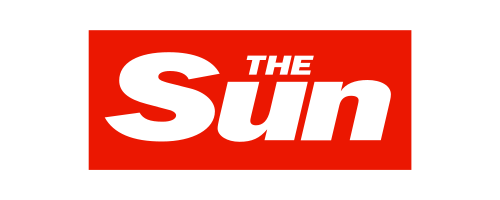Skip to the good bit
ToggleManaging cash flow is a headache that almost every business faces. Knowing how much money is coming in (cash inflow) and going out (cash outflow) is crucial for keeping a business running smoothly. It isn’t just about tracking pennies; it’s about understanding the financial health of your business.
This blog will help you dissect the differences between cash inflows and outflows and explore their significance for your business’s success. As you read through, you’ll uncover key sources of cash inflows and outflows, the essential calculations involved, and effective strategies to manage financial flow. Let’s relieve that cash flow pain and equip you with insights to enhance your business’s financial management.
Introduction to Cash Flow Fundamentals
In business, keeping track of money as it flows in and out is key to staying on top of everything else. So, let’s break down these two basic concepts: cash inflow and cash outflow.
- Cash Inflow: Money Coming into the Business
Imagine cash inflow as the lifeblood of your business. It’s all the money that comes in. This could be from selling products or services, earning interest on bank deposits, or even selling an old piece of equipment. The moment customers buy what you’re selling and money hits your account, that’s cash inflow. Similarly, if you invested in some stocks that paid dividends or earned interest from a savings account, that’s also cash inflow.
- Cash Outflow: Money Going Out of the Business
On the other side of the equation, we have cash outflow. This is the money that leaves your business to pay for things like rent, salaries, and buying new inventory. Every time you pay a bill or purchase something for the business, it represents cash outflow. For example, paying suppliers for raw materials or settling monthly utility bills are classic examples of cash outflows.
Monitoring cash flow aids in maintaining financial stability and informs business decisions.
Sources and Drivers of Cash Inflow
Understanding what is cash outflow is crucial for maintaining a business’s financial health. It not only helps sustain daily operations but also funds strategic growth initiatives. We’ll explore the main sources of cash inflow that support businesses in thriving amidst market changes.
Sales revenue and customer prepayments
Sales revenue is at the heart of any cash inflow strategy. It reflects the demand for a company’s products or services and is an essential indicator of business success. For instance, Nvidia’s achievement of $30 billion in revenues in the second quarter of fiscal year 2025 illustrates how robust sales revenue can be the backbone of cash inflow. Furthermore, customer prepayments can be a strategic way to manage cash flow. Businesses can stabilize their financial operations and reduce administrative tasks by receiving cash in advance for future products or services. Offering discounts or exclusive deals can incentivize prepayments and help build lasting customer relationships.
Investment income and interest
For companies with surplus capital, investment income is a reliable source of cash inflow. This can come from dividends on investments in other companies or interest from financial instruments. Such income consistently returns and retains liquidity, allowing businesses to smoothly continue operations even when market demand fluctuates.
Government grants and subsidies
Many businesses qualify for government grants and subsidies based on certain activities like research, development, or community projects. These funds are particularly valuable as they offer financial relief without the need for repayment. However, they require rigorous accounting and transparent reporting to ensure compliance with standards, maintaining trust with stakeholders and regulatory bodies.
Loan proceeds and financing activities
Lastly, cash inflow from financing activities such as loans or equity issuance provides immediate capital. This cash can be crucial during expansion phases or lean periods. Strategic use of these financial tools not only aids in bridging cash flow gaps but also bolsters long-term financial strategies, supporting overarching business objectives.
Major Cash Outflow Categories
As businesses embark on their journey to maintain a steady stream of cash inflow, it’s equally important to understand where their cash is going. This involves identifying the key sources of cash outflow, which include operating expenses, capital expenditures, debt repayments, and dividends or shareholder distributions.
Operating Expenses: These are the everyday costs that keep the lights on and the wheels turning. They encompass salaries, rent, utilities, and other essential operational costs. For instance, a company allocates a significant portion of its cash to salaries and wages, considering payroll taxes and benefits. Rent and utility payments cover the expenses related to maintaining facilities, which are indispensable for smooth business operations. Understanding and managing these costs is vital for sustaining profitability.
Capital Expenditures (CapEx): CapEx refers to the funds directed towards acquiring or improving long-term assets such as property, plant, and equipment. It’s an investment into the future of the business, often involving substantial upfront payments. These expenditures might include purchasing new machinery or upgrading technology to enhance efficiency. Although CapEx is crucial for growth, its impact on cash flow needs careful management, especially concerning short-term liquidity.
Debt Repayments: Repaying loans involves both principal and interest payments and falls under the umbrella of financing activities in a company’s cash flow statement. These repayments are key to maintaining financial health and creditworthiness. However, they can pose cash flow challenges if they aren’t timed to coincide with periods of strong cash inflow.
Dividends and Shareholder Distributions: Distributing earnings to shareholders is a way of showing appreciation for their confidence in the company. These distributions denote a financially stable company but may also constrain the available funds for reinvestments and are recorded in the financing section of cash flow statements.
Strategic management of these cash outflows ensures that a business remains liquid, operations run smoothly, and there is room for pursuing growth opportunities.
Influence on Liquidity and Fiscal Stability
While knowing the difference between cash inflow and outflow is vital, managing their impact on liquidity and financial health is crucial. Liquidity ensures a business can meet immediate obligations and seize growth opportunities.
Reliable cash inflow ensures that the business has adequate cash on hand to cover its daily operational expenses. For instance, cash from sales or services provides the necessary liquidity to pay for supplies, rents, utilities, and more. When inflows are consistent and predictable, they pave the way for smooth operations and potential reinvestment into the business.
However, mismatched timing of inflows and outflows can bring about complications. If a business experiences delayed inflows, it might struggle to cover immediate expenses, highlighting a liquidity crunch. This is where cash flow management strategies come into play.
Subsection: Implications for Cash Management Strategies
Careful planning and forecasting can help businesses balance cash inflows and outflows effectively. For example, by negotiating extended payment terms with vendors, a company might improve its cash flow cycle, allowing more time to manage income and expenses. The ability to delay outflows without incurring penalties offers significant relief for small businesses facing fluctuating income periods, as discussed in a helpful [Reddit thread on cash management](https://www.reddit.com/r/smallbusiness/comments/1gcjtzp/whats_your_definition_of_cash_flow/).
In conclusion, by closely monitoring both the volume and timing of cash inflows and outflows, businesses can protect their liquidity and ensure they are always prepared to meet their financial obligations.
Influence on Liquidity and Fiscal Stability
Simply put, liquidity refers to the ease with which a business can convert its assets into cash to meet its short-term obligations. When cash inflows are consistent and strong, businesses are better equipped to handle day-to-day expenses without the need for excessive borrowing. This, in turn, reduces financial risk and lowers interest expenses. A solid cash inflow profile also boosts a company’s creditworthiness. Lenders and investors are more likely to view the business as a stable and low-risk choice, making it easier to secure funding when needed.
Moreover, effective cash flow management ensures that cash reserves are strategically maintained. By aligning cash inflows with outflows, companies can avoid sudden cash shortages that can disrupt operations. Prompt payments to suppliers become feasible, nurturing strong relationships and potentially leading to better terms and discounts. This positive cycle of efficient cash flow management ultimately enhances the overall financial health of a business.
Regular cash flow analysis highlights any variances between projected and actual cash flows to provide valuable performance insights. By pinpointing these differences, businesses can adjust their strategies to improve operational efficiency. On a higher level, this offers a clearer view of the company’s financial landscape, allowing for better resource allocation and strategic planning.
Ultimately, understanding and managing cash flows empowers businesses to seize growth opportunities. With reliable cash inflows, companies have the flexibility to invest in new ventures, whether it’s entering a fresh market, boosting research and development, or even considering acquisitions. A healthy cash flow not only supports debt management, ensuring businesses can meet their obligations, but also strengthens the balance sheet. This fortifies the company against market uncertainties and positions it for sustained success.
Influence on Liquidity and Fiscal Stability
Calculating cash flow provides valuable insights into a company’s liquidity and overall financial health. Liquidity refers to the ability of a business to meet its short-term obligations using its available cash or assets that can quickly be converted to cash. By keeping track of cash flow, businesses can ensure they have enough liquidity to sustain operations and seize growth opportunities.
Net cash flow reveals how well a company manages its cash, identifying periods of excess which can be reinvested or used to pay down debts. Conversely, it highlights times when cash flow might be tight, prompting a closer look at expenses or a need to increase revenue streams.
Understanding operating, financing, and investing cash flows combined gives a holistic view beyond just profit and loss. This perspective helps assess how efficiently the company uses its resources. Accurate cash flow tracking is fundamental for forecasting and preparing for future financial needs without relying heavily on debt.
Strategies for Effective Cash Flow Management
Managing cash flow effectively is crucial for any business aiming to maintain financial stability and support growth. Here are some practical strategies to consider:
Enhancing Receivables Collection
First and foremost, enhancing receivables collection can significantly boost cash inflow. Setting clear payment terms and utilizing technology to automate the invoicing process can speed up collections. Offering incentives for early payments, like small discounts, can also encourage prompt payment from customers. For more detailed insights on improving receivables collection, you may visit the discussion on Reddit.
Optimizing Inventory Management
Optimizing inventory management is another pivotal factor. Implementing a Just-In-Time (JIT) system minimizes excess inventory, thereby reducing carrying costs. Regularly analyzing inventory turnover can help identify slow-moving items, allowing businesses to adjust inventory levels accordingly. Negotiating better terms with suppliers, such as extended payment periods or bulk purchase discounts, can also alleviate pressure on cash outflows.
Reevaluating and Refining Pricing Strategies
Another essential aspect is reevaluating and refining pricing strategies. Conducting a price elasticity analysis can indicate how demand might change with price adjustments, helping businesses optimize their pricing for maximum income. Value-based pricing, where the price reflects the perceived customer value, can also enhance cash inflow. Adjusting prices seasonally to align with demand fluctuations allows businesses to capitalize on peak periods while remaining competitive during off-peak times.
Refinancing High-Cost Debt
Refinancing high-cost debt can significantly improve cash flow by lowering monthly obligations. Current interest rates should be assessed to determine if refinancing offers a more favorable option. Considering alternative lenders who might provide more competitive rates or terms can further ease financial demands. However, it’s crucial to weigh the long-term implications, ensuring that while short-term relief is achieved, the overall cost of debt remains manageable.
Utilizations of Cash Flow Forecasting Tools
Utilizing cash flow forecasting tools is invaluable for predicting future cash positions and avoiding unexpected shortfalls. Software or automated tools like QuickBooks or FreshBooks can simplify tracking and provide real-time insights into cash inflows and outflows. Maintaining accurate financial records and regularly updating cash flow statements ensure that the company’s financial health is consistently monitored and that any discrepancies are promptly addressed.
Strategic Cash Flow Management for Business Success
Managing cash flows secures a strong financial foundation. By ensuring there is enough cash on hand to meet both immediate and future financial needs, businesses can avoid pitfalls like bankruptcy. Effective cash flow management also supports operational efficiency, helping businesses meet their obligations promptly. This reliability not only facilitates smoother operations day-to-day but also positions the business advantageously for future growth.
Cash flow understanding is vital for strategic planning, such as investments and budget setting. A positive cash flow reduces the risk of operational disruptions and helps a business capitalize on new opportunities when they arise.
To achieve positive cash flow, implementing effective strategies is essential. Businesses should focus on minimizing unnecessary expenses, broadening revenue channels, and streamlining invoicing processes. Improving inventory management and adopting process automation can further enhance cash management and operational efficiency. By concentrating on these areas, businesses can lay down firm financial foundations, leading to long-term growth and success.
Overall, proper cash flow management is a cornerstone of business success, providing the stability needed to expand and flourish in a competitive market.
Youtube Videos
You can also refer to the following youtube videos in your article.
- https://www.youtube.com/watch?v=hMBN6yTIDb0
Brief: This video provides an in-depth explanation of the cash flow statement, focusing on the three sections: operating, investing, and financing activities. It is highly relevant to understanding cash inflow and outflow, which is crucial for assessing a company’s cash management effectiveness.
- https://www.youtube.com/watch?v=TUEDdwf_-K0
Brief: Roger Philipp’s discussion on the statement of cash flows helps demystify how cash inflows and outflows are categorized, offering practical insights into understanding the differences and the categorization of cash activities. This directly relates to the definitions and importance of cash inflow and outflow discussed in the blog.
- https://www.youtube.com/watch?v=DmzubXSyx5w
Brief: The video explains the basic principles of cash inflow and outflow, providing foundational knowledge crucial for understanding the detailed financial dynamics in business operations.
- https://www.youtube.com/watch?v=Nuja7yDjG-c
Brief: This video offers a clear explanation of the statement of cash flows, emphasizing the importance of understanding cash inflows versus outflows. It aligns with the blog’s focus on the importance of these concepts in financial management.
Reddit Threads
You can also refer to the following reddit threads in your article.
- https://www.reddit.com/r/Accounting/comments/1dx19xc/understanding_cash_flow_from_operating_activities/ :A Reddit user expressed difficulty in understanding how an acquisition impacts a cash flow statement under GAAP. Specifically, they asked whether an increase in inventory due to acquisition should be shown as an operating activity or under investing activities. The replies clarified that such changes are not considered part of operating activities; instead, the total cash outflow for the acquisition appears under investing activities. This illustrates how cash flow statements reflect not just operating cash flow changes but also more complex transactions like acquisitions. [source](https://www.reddit.com/r/Accounting/comments/1dx19xc/understanding_cash_flow_from_operating_activities/)
- https://www.reddit.com/r/smallbusiness/comments/1gcjtzp/whats_your_definition_of_cash_flow/ :An individual on Reddit was looking to improve their understanding of cash flow for a lawn and landscape business. A notable reply emphasized that successful cash flow management isn’t just about keeping profit margins, but also about the timing and reliability of cash inflows to cover ongoing operational costs like payroll. This highlights the significance of managing financial periods with fluctuating income, ensuring bills are paid regardless of immediate profitability. [source](https://www.reddit.com/r/smallbusiness/comments/1gcjtzp/whats_your_definition_of_cash_flow/)
- https://www.reddit.com/r/explainlikeimfive/comments/16s2k0v/eli5_what_is_cashflow/ :A discussion on the ELI5 subreddit explained that cash flow involves all aspects of cash income and expenditure, unlike profit statements which only focus on goods and services sold versus production costs. Cash flow statements provide a fuller picture by accounting for borrowing, asset transactions, and other financial activities. This can help better assess a company’s overall financial health beyond just profitability. [source](https://www.reddit.com/r/explainlikeimfive/comments/16s2k0v/eli5_what_is_cashflow/)
- https://www.reddit.com/r/Accounting/comments/gde8r4/preparing_a_cash_flow_statement_a_bit_confused/ :A user on Reddit was uncertain about the classification of assets and liabilities in cash flow statements. A response clarified that while current assets and liabilities often fall under operating cash flows, there are exceptions. For example, noncurrent assets usually belong under investing, not financing, and equity and liabilities are typically seen as financing activities. This distinction is crucial for accurately preparing cash flow statements. [source](https://www.reddit.com/r/Accounting/comments/gde8r4/preparing_a_cash_flow_statement_a_bit_confused/)
Research Data
You can also refer to the following research in your article.
- Research Source : https://aswathdamodaran.blogspot.com/2024/09/
Research Data Points:
- Nvidia reported revenues of $30 billion in the second quarter of fiscal year 2025, beating the analyst consensus estimate of $28.42 billion.
- Nvidia reported earnings per share of 68 cents, above the analyst consensus estimate of 64 cents.
- Nvidia’s stock price dropped by 8% on August 28, 2024, after the earnings report, and continued to decline, trading at $106 on September 5, 2024.
- In the 30 days leading up to the earnings report, Nvidia’s earnings estimates had drifted up by about 0.1%.
- Analyst estimates for Nvidia’s earnings per share ranged from 60 to 68 cents, and for revenues, from $26 to $30 billion.







